Search
To search for an exact match, type the word or phrase you want in quotation marks.
A*DESK has been offering since 2002 contents about criticism and contemporary art. A*DESK has become consolidated thanks to all those who have believed in the project, all those who have followed us, debating, participating and collaborating. Many people have collaborated with A*DESK, and continue to do so. Their efforts, knowledge and belief in the project are what make it grow internationally. At A*DESK we have also generated work for over one hundred professionals in culture, from small collaborations with reviews and classes, to more prolonged and intense collaborations.
At A*DESK we believe in the need for free and universal access to culture and knowledge. We want to carry on being independent, remaining open to more ideas and opinions. If you believe in A*DESK, we need your backing to be able to continue. You can now participate in the project by supporting it. You can choose how much you want to contribute to the project.
You can decide how much you want to bring to the project.

Paco Chanivet and Rafal Zakjo come from different contexts and seemingly -at least in the visual aspect- opposite practices, however, both of them are rooted in local tradition and sci-fi narratives. This conversation unfolds their work and their reading of folklore through the lens of the cosmic, and vice versa.
Jorge Van den Eynde: Could you briefly describe your artistic practices?
Rafal Zajko: I am a Polish artist based in London and my work revolves around the industrial past and its environmental impact in relation to working-class heritage and queer identities. My sculptural practice incorporates diverse materials and processes, including ceramic, ventilation systems, prosthetics, and performance as a means to examine Polish folklore, science fiction and queer technoscience.
Paco Chanivet: The best way to describe what used to be my work is: figurative installation perverted by a relationship of dependence with the absolute where scientific, religious and speculative stories meet. In other words, I used to create strange situations in weird places. My greatest source of inspiration has always been Holy Week processions or the baroque altars of Catholic churches that abound in my hometown, Seville, seasoned with speculative fiction and materialistic horror. However, the truth is that Paco Chanivet, as an artist, ceased to exist about a year ago. The main reason was the sudden and unexpected death of my father and a strange link between one of my pieces and his disappearance/abduction/transmutation.
JV: I am very sorry to hear that, Paco. Reading the descriptions of what you do made me notice an interesting point of departure: folklore and tradition. While Rafal recovers Polish folklore in his practice, Paco has mentioned that one of his greatest sources of inspiration is Holy Week processions. Could you delve into the ways in which your work explores the ‘roots’ of tradition?
RZ: Paco, I’m sorry to hear about your father – it must have been very hard. Catholicism had a huge impact in my formative years, particularly its connection to death and the afterlife. With one of my recent exhibitions, Resuscitation, I was reflecting upon this point just before death when something is brought back to life. I was thinking about us humans trying to save the planet, protect nature before it crumbles. In Amber Chamber I created a kind of sarcophagus for Chochol, a character from Polish folklore who would act as a metaphor for resuscitation. He was a character in a novel called The Wedding, by Stanisław Wyspianski, who created him because people were disrespecting nature. Chochol’s form comes from the shape of the haystacks that would protect smaller trees during winter. In the performance, I sang a traditional funeral song from my region in North-East Poland, which is a very Catholic area in which there are also a lot of people who are spiritual healers, fortune tellers and older ladies called ‘whisperers’. There is a weird mixture of catholicism and paganism. The song comes from a traditional way of voice emission called white singing, mostly sung by older ladies at funerals. In the lyrics, a person says goodbye to the world and I liked how it could also be understood as saying goodbye to the earth, as a planet. I wanted it to be interpreted less about mourning and more about an expectation of something else: new beginnings. The performance was deeply embedded in research I have been doing on Soviet cosmism and Nicolai Fyordorov; ideas about how he thought that humankind was only going to find happiness somewhere other than earth.
PC: If I make a retrospective exercise I would say that I started speculating with apocalyptic narratives reading and listening to the stories of the Old Testament. Not long ago I discovered that everything that I do comes from a particular object related to the Holy Week: “the basket” of the procession of La Carretería. It is a wooden carving of neo-baroque style from the early 1900s that resembles a basket surrounded by thick tree branches intertwined with golden ropes. As a child, attending ceremonies that involved circling this abysmal foliage left me perplexed among the nooks and crannies of its twisted forms. When I reconnected with these moments I understood many of the logics through which I operate to produce my works. At the time of thinking I sit in front of some concepts and let them twist and embrace until they hold the final piece, or in the formal aspect, at the time of drawing or modelling, my hand always moves, imitating that sea of unleashed volutes. If I do the same exercise as you, I would say that in Alternativa X the references to tradition are very literal, not only for speculating with an end of the world but for doing so by perverting the Christian symbolism until it becomes a corporation of a Kaiju movie. In other types of projects, I would say that the way to connect with tradition is by creating scenarios of mystery, imitating the altars of churches. There are inverse processes, for example, in Interregno, all the efforts were focused on creating an experience of estrangement and helplessness.
JV: After talking about your personal and artistic connections with tradition and folklore, we shall delve into the other pivotal aspect of the conversation: science fiction and outer space. Could you describe the various cultural references that you take from speculative fiction and the reasons why you employ such imaginaries in your practice?
PC: It took me a while to understand that my practice could be a space to grow my weirdness, to give space to the worlds that I have been inhabiting since I was a child. The references I take from speculative science, fantasy or horror come from many different places: literature, film, video games, comics and conspiracy theory: from J.R.R. Tolkien’s The Silmarillion, Thomas Lingotti or Mariana Enríquez, to Charlie Kaufman, La Casa de los Metabarones by Juan Gimenez and Alejandro Jodorowsky or conspiracy theories such as cryptozoology or the NWO (I see them as types of speculative fiction). The reason why I make use of these imaginaries is that I understand that art is already a great speculative fiction in itself. Another reason is that I conceive my work as digestion or vomit since it integrates and expels everything I consume. In that sense, there is a relation to the dissolution of the self from religious mystics and facing and accepting a great mystery.
RZ: I have always been drawn to science fiction, in fact, many of the writers and directors that you have mentioned had a huge influence on me too. Another central influence is the soviet architecture I grew up with, which lent itself so fittingly to a science fiction aesthetic. As I have gotten older I have relished science fiction’s ability to allow artists to create alternate worlds and deal with the complex issues of existing in the present. I would cite Ursula K. Le Guin as being a huge inspiration in that regard. I believe that queerness is at the core of science-fiction, offering a sense of otherness, the imagination of new cultures, new belief systems, and new ways of living.
JV: Rafal has mentioned his interest in Russian cosmism and the possibility of finding new worlds and beginnings outside our planet while Paco has introduced the idea of estrangement that he seeks in his work: creating experiences where the audience will feel detached from this world and encounter other weird realities – very much in line with Mark Fisher’s or Elvia Wilk’s writings on the weird. These two lines of thought —cosmism and the weird/estrangement— approach outer space or other realities as spaces of radical encounters between our anthropocentric vision (the human) and the unknown (the non-human).
RZ: In her essay The Word Made Fresh, Elvia Wilk speaks about the character from Annihilation, who gets contaminated by the subject in Area X. She stops being considered as a reliable observer – and becomes part of the landscape herself. After discovering that the Earth is not the centre of the Universe, humans were no longer just observers of the sky and realised that we are just a compartment of the many galaxies that we look upon. Perhaps we must remove ourselves as being central to this planet and start considering our surroundings from a less anthropocentric position. Our perceptions are constantly evolving. For example, chimneys were once a sign of progress, and now they become shameful symbols of the industrial revolution and humans’ destruction of nature.
PC: The other will always be something prodigious, wonderful and terrible. Instead of opening ourselves to the other, we have developed the ability to consume it and fool ourselves into believing that it was an integrative experience. I believe that if these cosmic encounters were genuine we would lose our minds, we would become aware that we are a self-aware nothingness… maybe that would make us a more humble and cautious species in our awareness of the forces of nature.
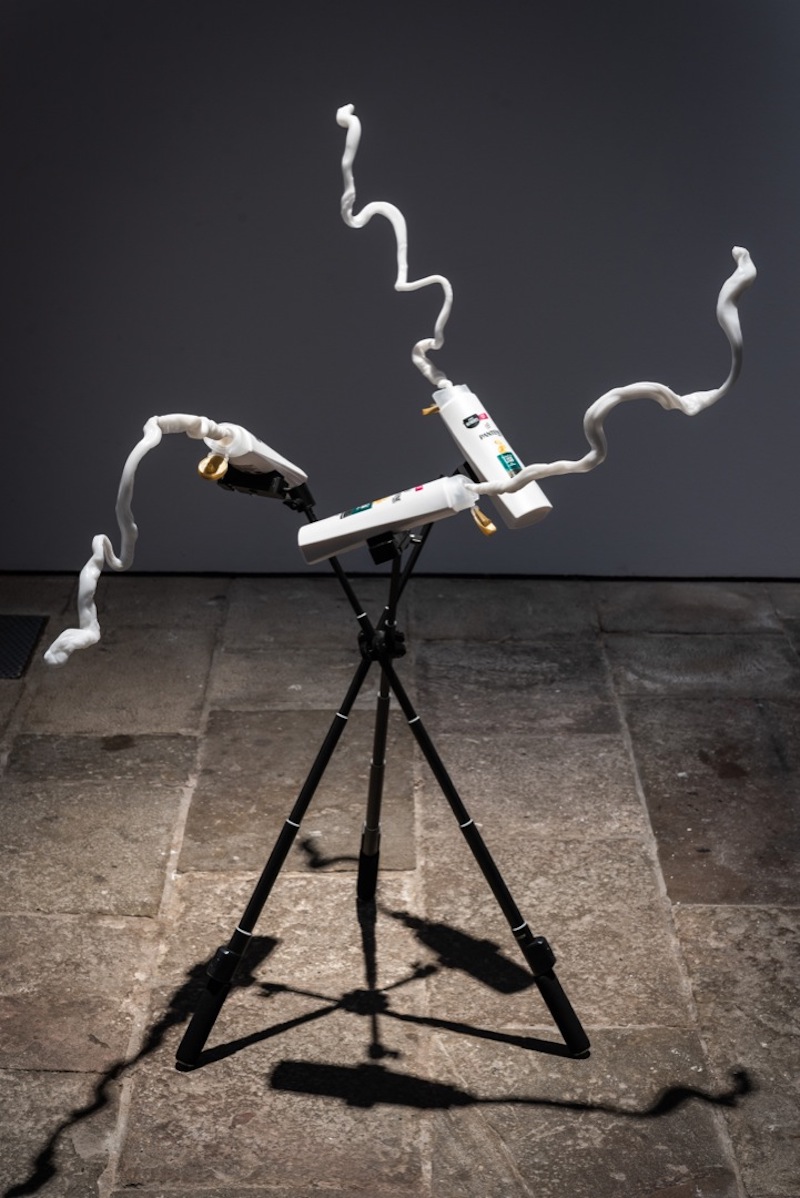
Paco Chanivet, “SSSSSSSilex”, 2018
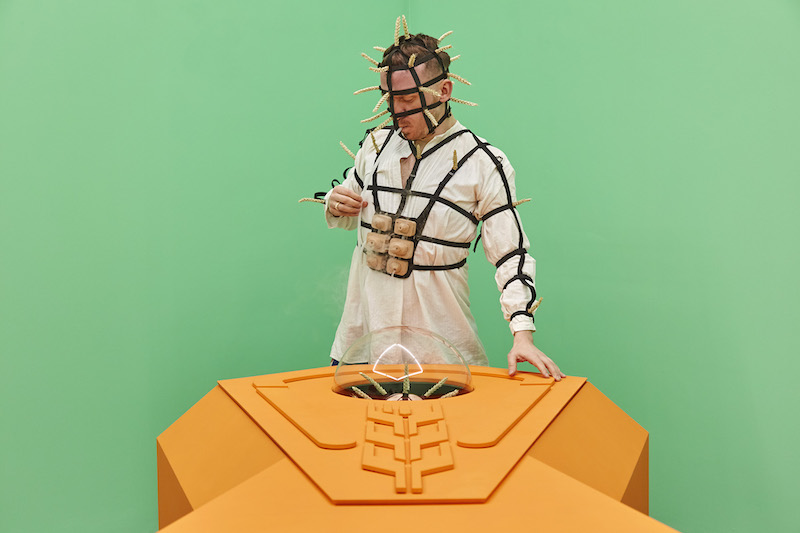
Rafal Zajko, “Interludium”, 2020
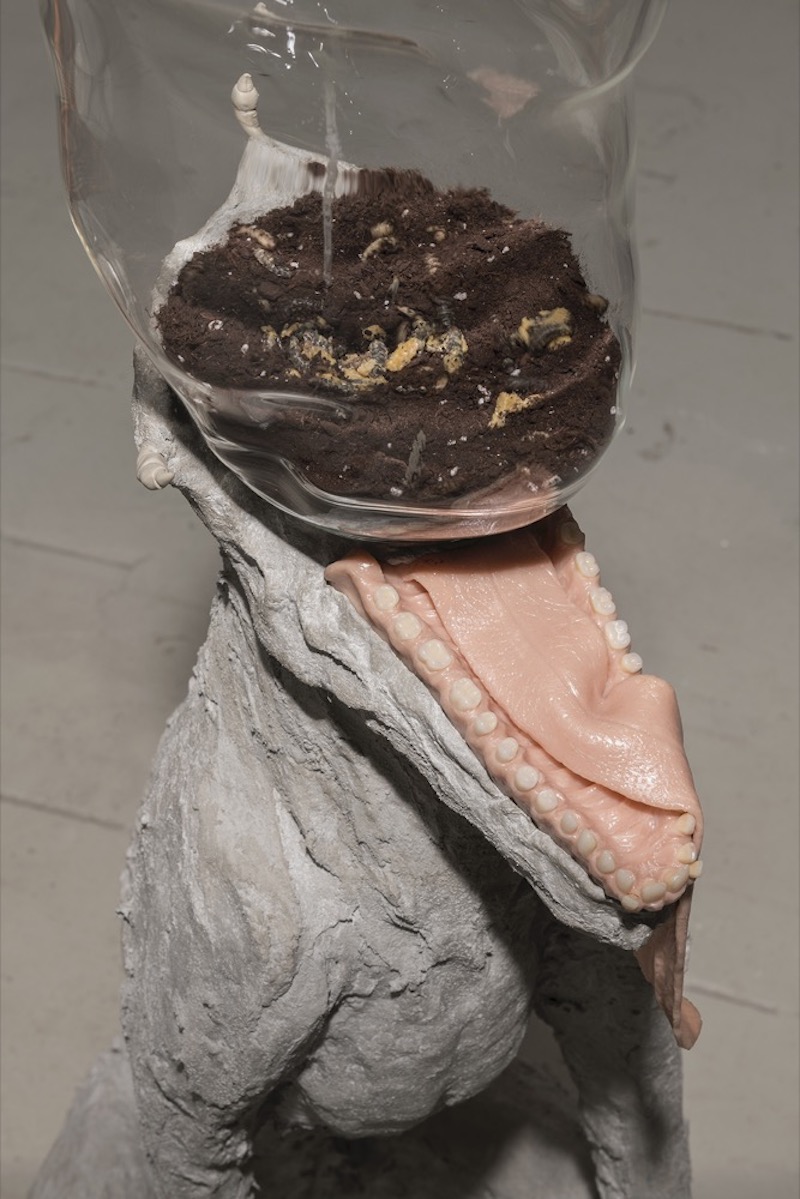
Paco Chanivet, “Però no tinc temps per a aquesta merda ara mateix, com si m’importessin els concursos de pixades entre monstres”, 2020
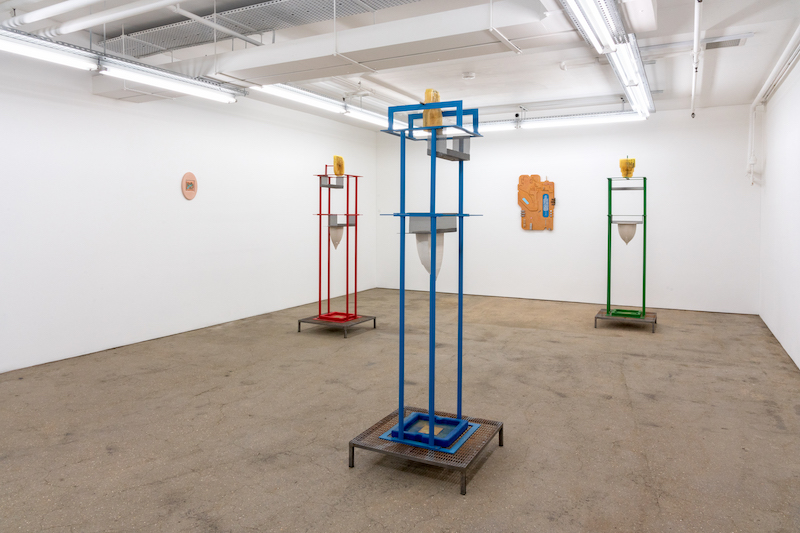
Rafal Zajko, “Amber Waves”, 2021
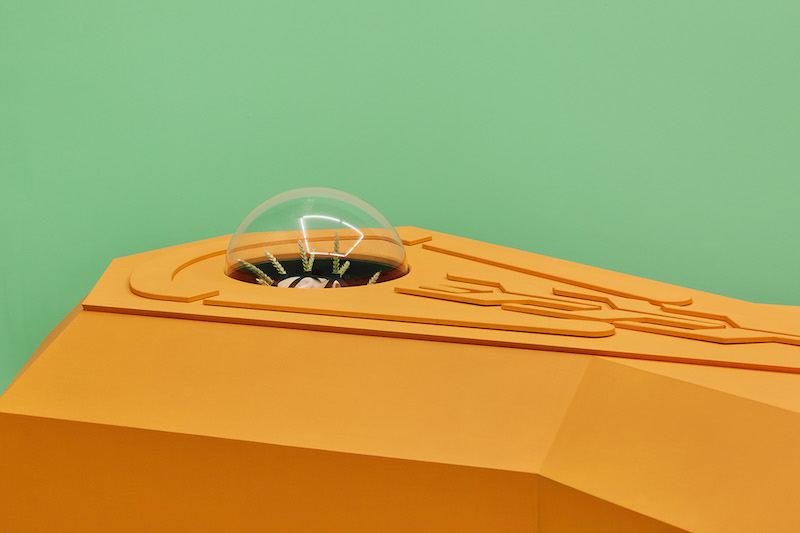
Rafal Zajko, “Amber Chamber”, 2020
(Foto portada: Paco Chanivet, Interregnum, 2019. Foto: © Mathius de Felipe)
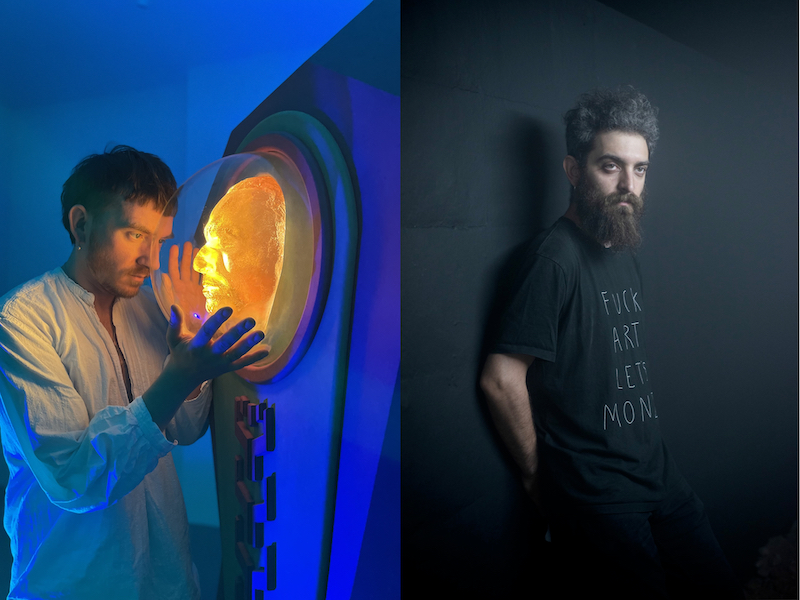
Rafał Zajko (b. 1988, Białystok, Poland) lives and works in London, UK. He holds an MFA in Fine Art from Goldsmiths, University of London and a BA (Hons) in Fine Art from Chelsea College of Art, London, UK. Recent solo exhibitions include Amber Waves at Public Gallery, Resuscitation, Castor
Projects, London, UK (2020); We Were Here/My Tu Bylismy, Galeria Im. Slendzinskich, Białystok, Poland (2019); Unputdownable, White Cubicle, London (2018).
Paco Chanivet (Seville, 1984) has a degree in Fine Arts, with studies in social and cultural anthropology, as well as in film direction and screenwriting. He lives and works in Barcelona. Some of his contributions in the national artistic field have been for: Sala d’Art Jove, La Virreina Centre de la Imatge, EspaiDos – Sala Muncunill, C.C. Las Cigarreras, ADN Platform, Arts Santa Mònica, La Capella, Matadero Madrid y Espai 13 de la Fundació Miró.
"A desk is a dangerous place from which to watch the world" (John Le Carré)